The island of Puerto Rico offers Caribbean beaches, tropical weather, and an equally warm welcome from its people. Searching out the best places to snorkel in Puerto Rico is a great way to discover many of its delights.
From the urban appeal of historic San Juan to the natural beauty of islands such as Cayo Icacos or Culebra, there is a rich variety. You can snorkel amid ornate corals, majestic sea turtles, or the “lost” wonders of an underwater “Atlantis”.
There are snorkel spots for the most nervous of swimmers, and others to test the most adventurous. Take the plunge to find your perfect tropical paradise, creating the memories of a lifetime on this most enchanted of islands.
Isla Verde
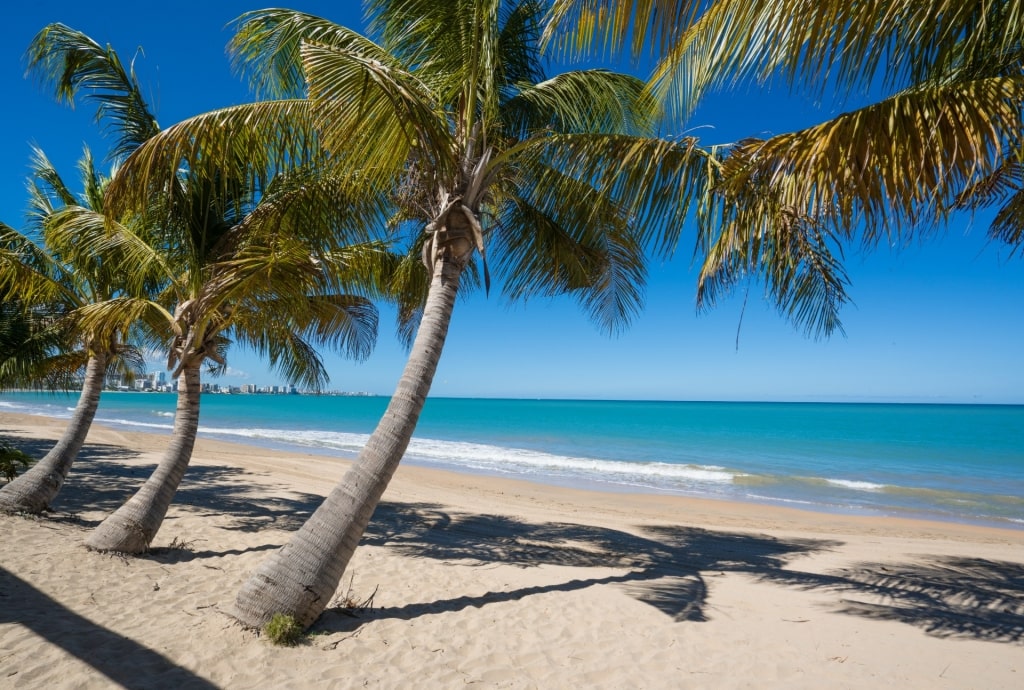
Isla Verde
San Juan’s most popular city beach has three miles of raked sand. Lined with palms, and sheltered by a reef, it’s a perfect spot to relax with some gentle snorkeling.
Backed by luxury hotels, and with plentiful shops, restaurants, and bars within easy reach, this is not a beach for solitude. However, once in the warm water, you can still find tranquility amid the natural world that carries on undisturbed.
Some gentle waves do break over the reef, which can stir up the sand to reduce visibility. At the center of the beach, there is even enough action for a surf school.
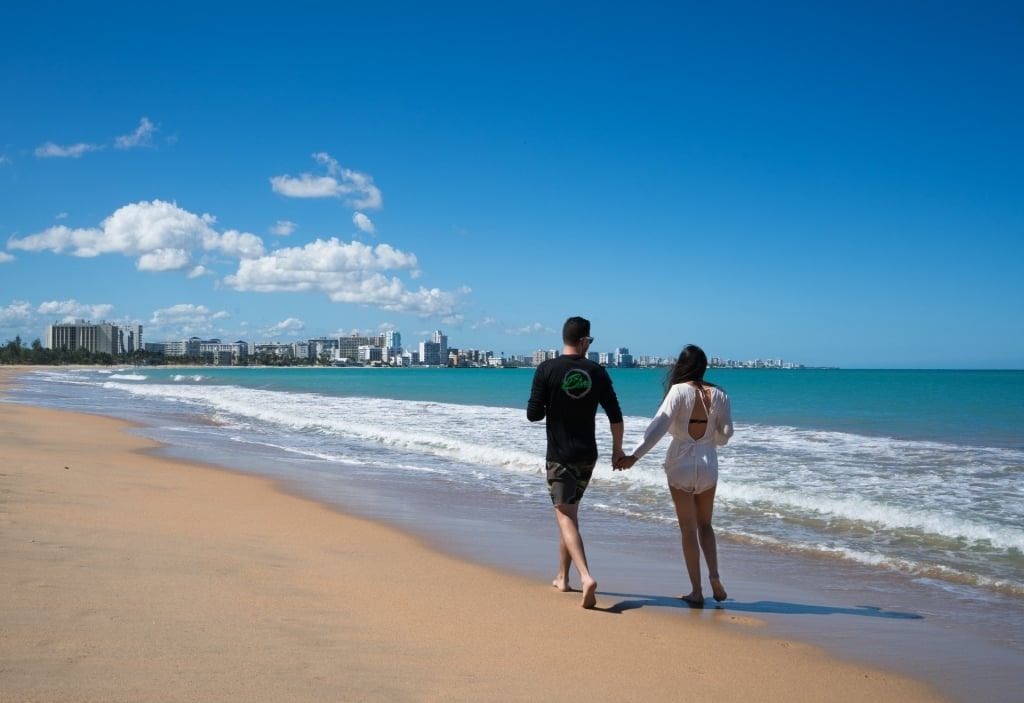
Isla Verde
Keep to the edges of the beach to escape the waves and some of the crowds. You’re obviously not going to see the marine life of some of Puerto Rico’s more remote beaches, but it’s still a lovely tropical experience.
If you’re with family, visiting Isla Verde is one of the best things to do in Puerto Rico with kids, where you can enjoy the shallow water. That shelter also makes it ideal for snorkel novices to gain confidence.
Read: Puerto Rico vs Costa Rica: Which Should You Visit?
Playa El Escambrón

Playa El Escambrón
One of the best places to snorkel in Puerto Rico is close to San Juan. Playa El Escambrón has an underwater marine park nearby, with sights from elkhorn corals to enigmatic sunken statues.
Blue-flagged Escambron Beach itself is sheltered by a reef just offshore, and shady palm trees. At its eastern side are two artificial reefs, with more than 650 feet of a man-made environment to attract reef fish.
“Atlantis” replicates the feel of the famed sunken city, with Doric columns, vases, and eerie statues at a depth of 12 feet. The sandy bottom can reduce visibility, but that adds to the atmosphere.

Playa El Escambrón
Entry to the reef is from the gently-sloping La Pocita Bay. The sheltered bay is usually very calm, and has some interesting snorkeling itself—as well as being popular for dive training.
Close to “Atlantis” is a series of A-framed structures where reef fish thrive. Look out for seahorses in particular.

Playa El Escambrón
There is also a seaweed forest in the bay, where you should find sea turtles amid the seagrass. The bay’s crumbling Fish Protection Wall is also worth exploring.
Read: Best Things to Do in San Juan, Puerto Rico
Seven Seas Beach, Fajardo
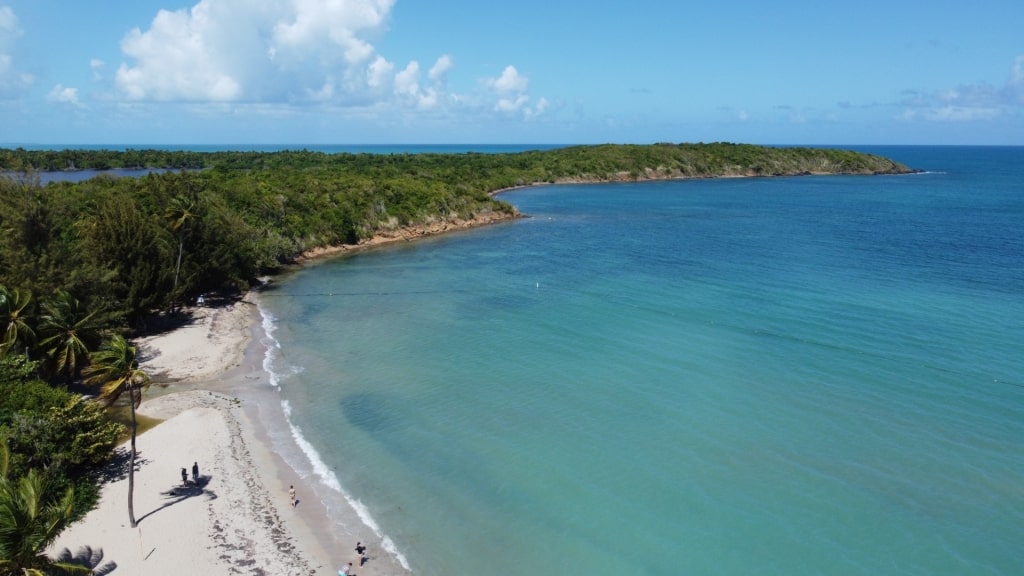
Seven Seas Beach, Fajardo
Seven Seas Beach on the northeast coast of Puerto Rico is the perfect crescent-shaped bay with calm waters, palm trees, and beautiful scenery. Snorkelers can enter straight off the beach to explore a reef or the marine life nearer the shore.
You can see snappers, parrotfish, and maybe even a sea turtle. Several rock formations near the shore attract small shoals of other fish.
The reef itself is relatively shallow, which is perfect for novice snorkelers. Although the Caribbean beach can be crowded, this is also reassuring for beginners, as help is always at hand.
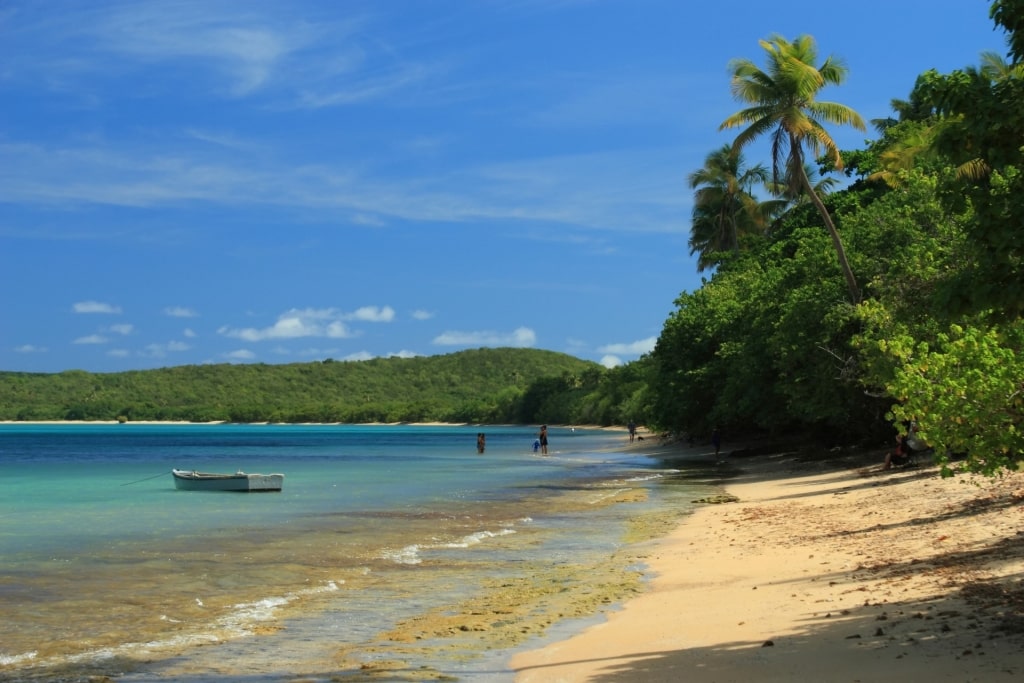
Seven Seas Beach, Fajardo
Avoid the weekends or holiday times for a more peaceful snorkeling experience. Alternatively, get here early in the day if you can to enjoy the beautiful setting all those people are coming to enjoy.
Like most beaches on the island, Seven Seas has high surf in winter, which can make it unsuitable for snorkeling, but perfect for surfing in Puerto Rico.
In summer, the waves are much milder, putting it among the best places for snorkeling in Puerto Rico. The beach is lined with palm trees for shade, and has lifeguards on duty at busy times. It is also one of Puerto Rico’s seven Blue Flag beaches.
Steps Beach, Rincon
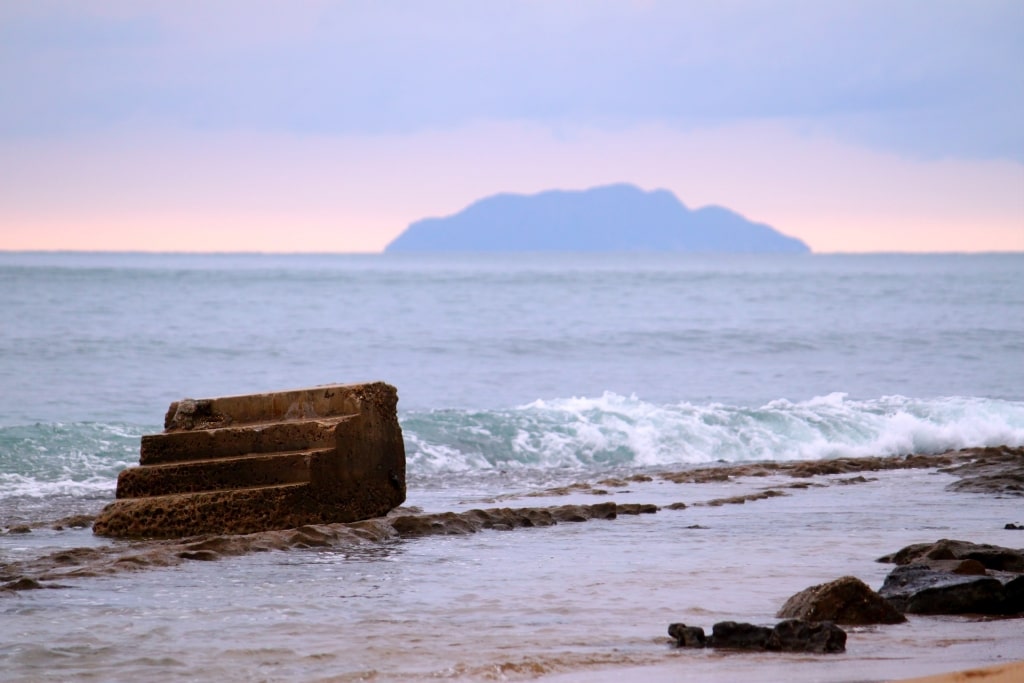
Steps Beach, Rincon
Steps Beach—Playa Escalera—is named for the set of three concrete steps on the shore. It’s a great spot for surfing in winter, but also good for snorkeling in spring, and in summer, when waves are calmer.
From this west coast beach, you can snorkel straight off the beach. Even better, its sandy bottom helps you avoid the rocks or sea urchins that are common elsewhere around Rincon.
The reef starts at 100 feet out, with plenty of healthy sea life. Expect to see anything from lobster and eels to octopuses and turtles.
The rocks on the right-hand side of the beach are best for exploring. Visibility is usually excellent.
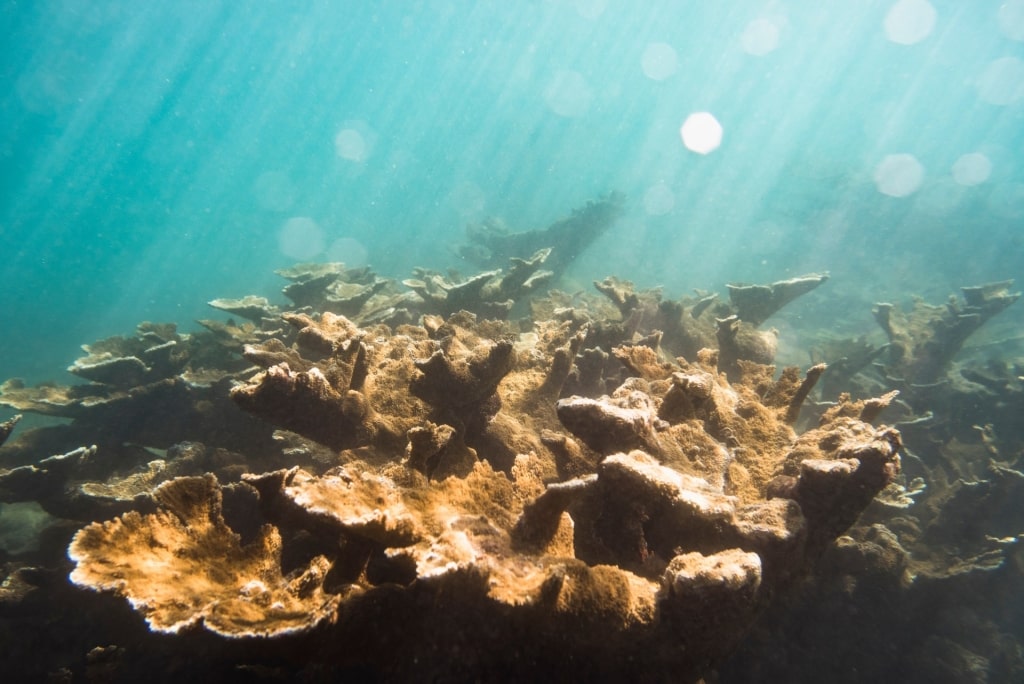
Reserva Marina Tres Palmas
This beach, and its precious coral, are within the Reserva Marina Tres Palmas (RMTP). Seven species of endangered coral are protected by the marine reserve.
Coral may not be as immediately fascinating as the glimmering shoals of tropical fish, but one could not exist without the other. The endangered Elkhorn coral (Acropora palmata) fills a particularly important role in preserving the coastline with its thick, branching structure.
Crash Boat Beach, Aguadilla
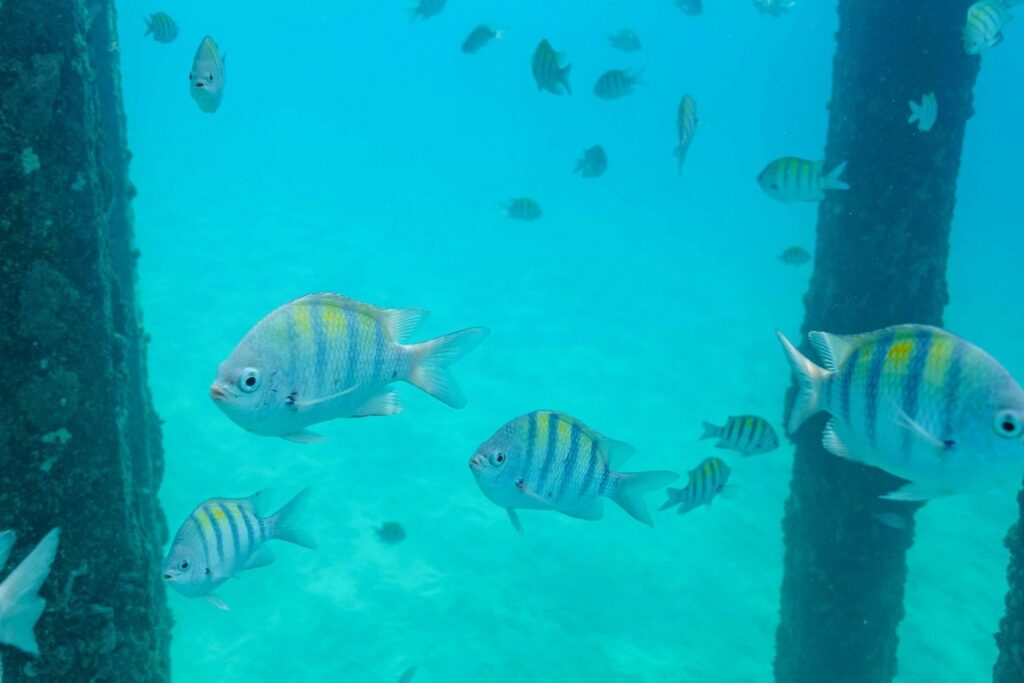
Crash Boat Beach, Aguadilla
Known as a party beach, Crash Boat took its name from the rescue boats that once supported a former USAF base nearby. The jetty they used still stands in the middle of the beach, its piers now home to abundant marine life.
There is a good sandy bottom, and visibility is normally good. Snorkel around the pier to see corals and plenty of tropical fish. You may even spot some lobster around the reef outcrops at either end of the beach.
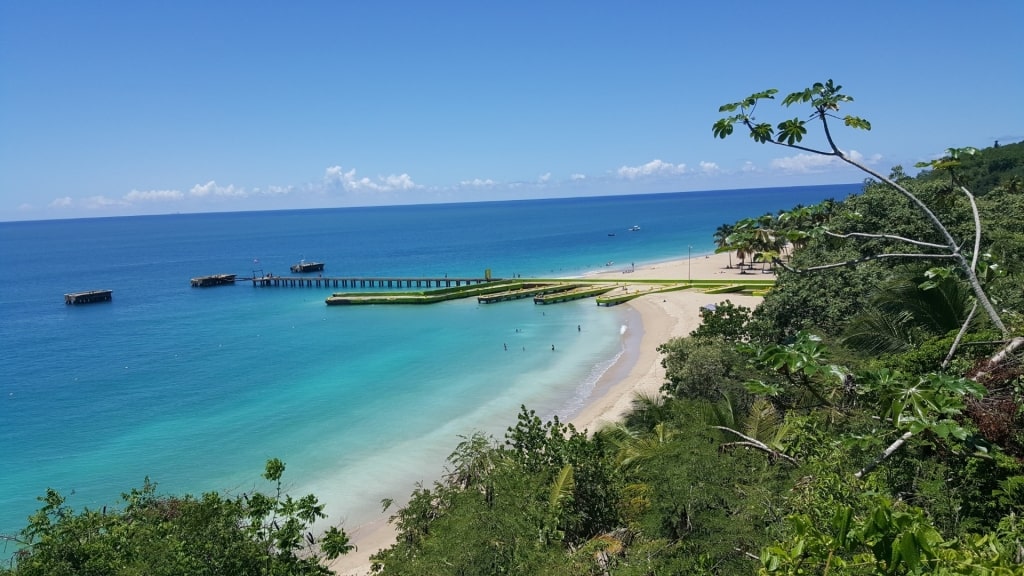
Crash Boat Beach, Aguadilla
Jumping off the pier is popular with young Puerto Ricans. The crystal-clear water is intimidating, as it’s difficult to judge the real depth.
Crash Boat is backed by dense greenery, offering plenty of shade for lounging around afterward. You’ll find lots of choices for food stalls, and shacks to rent out snorkel gear.
At weekends, or at holiday time, there is a reason Crash Boat is one of the most popular beaches on Puerto Rico. It’s a great place to meet local people and enjoy the island lifestyle.
La Parguera, Lajas
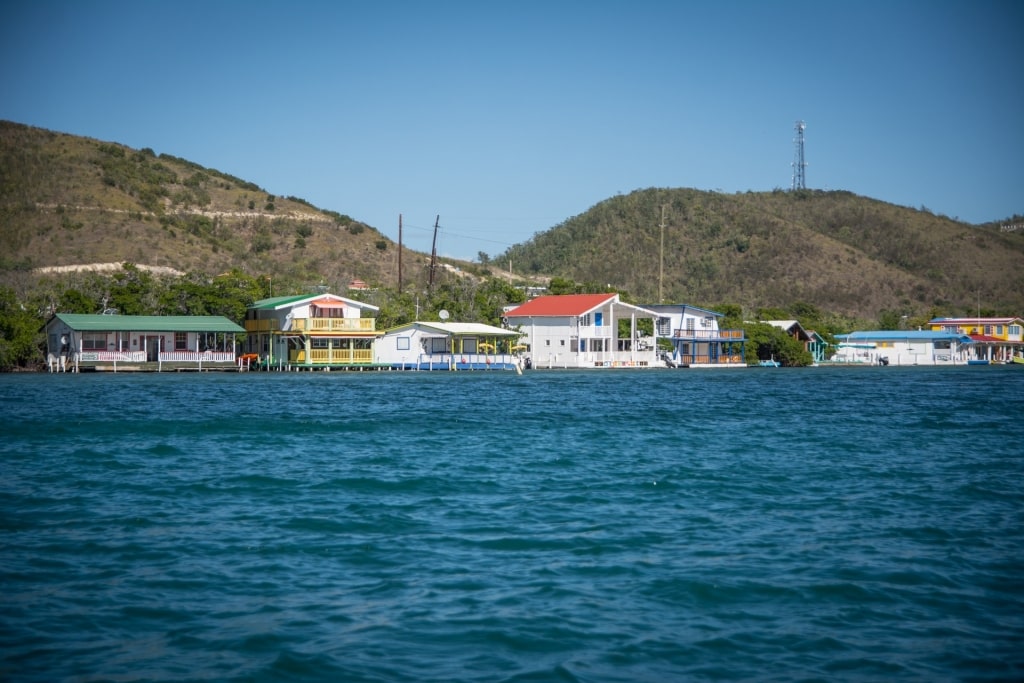
La Parguera, Lajas
La Parguera, a two-hour drive from San Juan, is best known for its bioluminescent bays. As the sun falls over the horizon, you can see the haunting light emitted by millions of microorganisms.
During the day, the beach here is a place to experience reef life at a depth starting at only ten feet. That’s ideal for any snorkeler, while the more experienced can carry on down to 25 feet.
The area is protected within La Parguera Nature Reserve, which was set up around two bioluminescent bays: Bahía Fosforescente, and Monsio José. Bioluminescence depends on good water quality, so the park ensures no pollutants affect that.
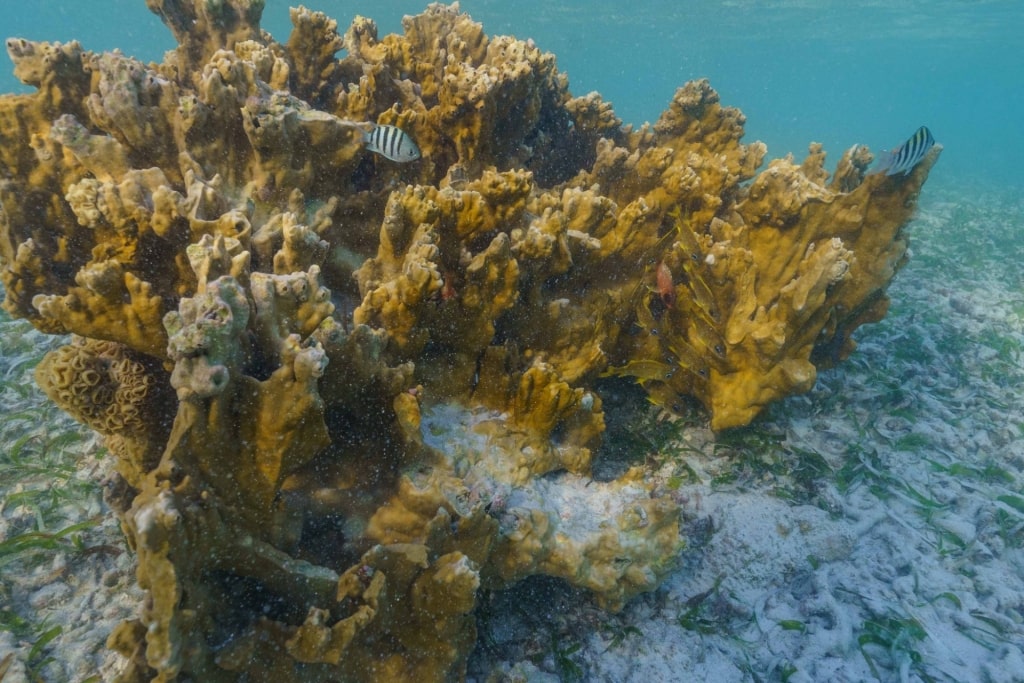
La Parguera, Lajas
The reserve also includes mangrove forests, mangrove islands, and coral reefs. A former fishing village, La Parguera itself is now a major tourism center because of the reserve.
As well as snorkeling off the beach, among parrot fish or sea turtles, you can kayak through the mangroves to explore further afield. Scuba divers can also enjoy a notable wall dive.
However, those bioluminescent bays remain the main attraction. A sunset cruise is the best way to combine snorkeling with seeing this wonder of nature.
Cayo Icacos
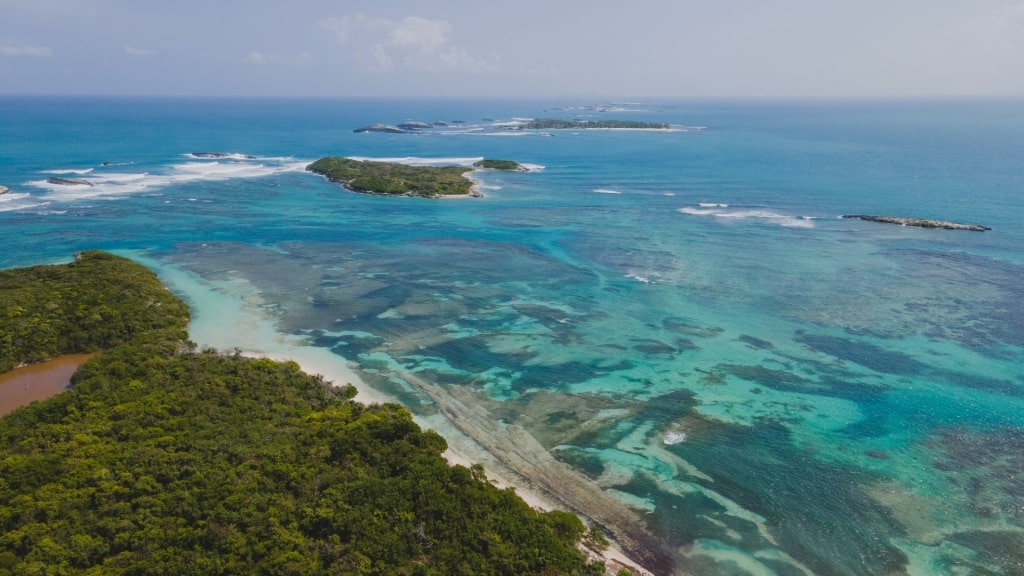
Cayo Icacos
This small, uninhabited island just off the east coast is the largest cay in La Cordillera Nature Reserve. The warm water, sandy white beaches, and marine life here are the very essence of Puerto Rico’s charm for many visitors.
Cayo Icacos can only be reached by boat and is a destination for snorkeling day tours. The clear water, abundance of marine life, and pristine coral make for a perfect experience.
The island can be crowded at peak times. Aim to go early, later in the day or on weekdays if visiting at high season.
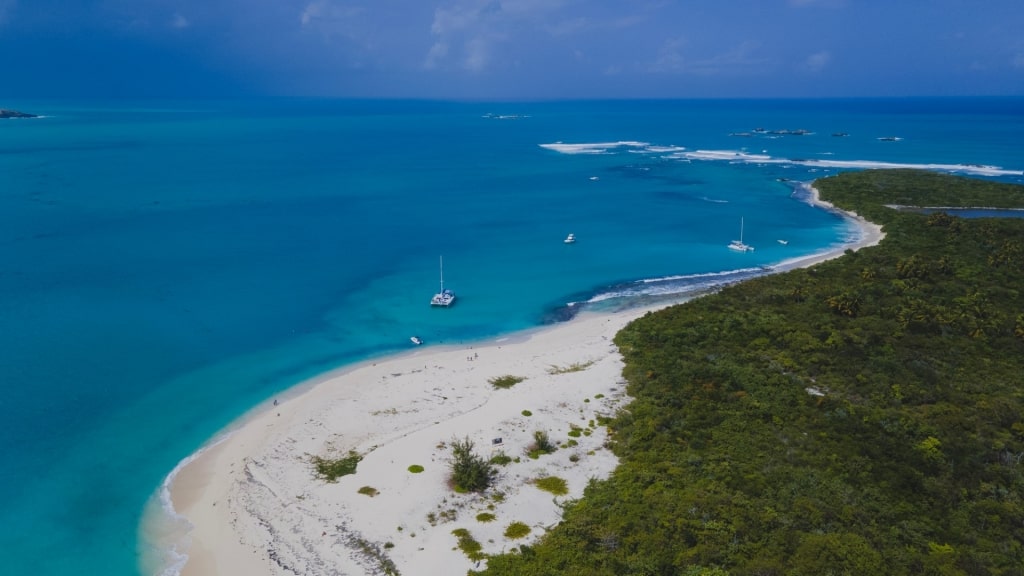
Cayo Icacos
However, Cayo Icacos is big enough to still offer quiet corners. You can also rent a kayak to paddle out beyond the beach.
Near the noisier boats, the sea life can be disappointing. But as soon as you swim a short distance away, you can see everything from parrotfish to turtles along the Caribbean coral reef.
There are no facilities on Cayo Icacos, so you should bring everything you need with you that your boat tour doesn’t provide. Reef-friendly sunscreen and a sunhat are essentials.
Vieques
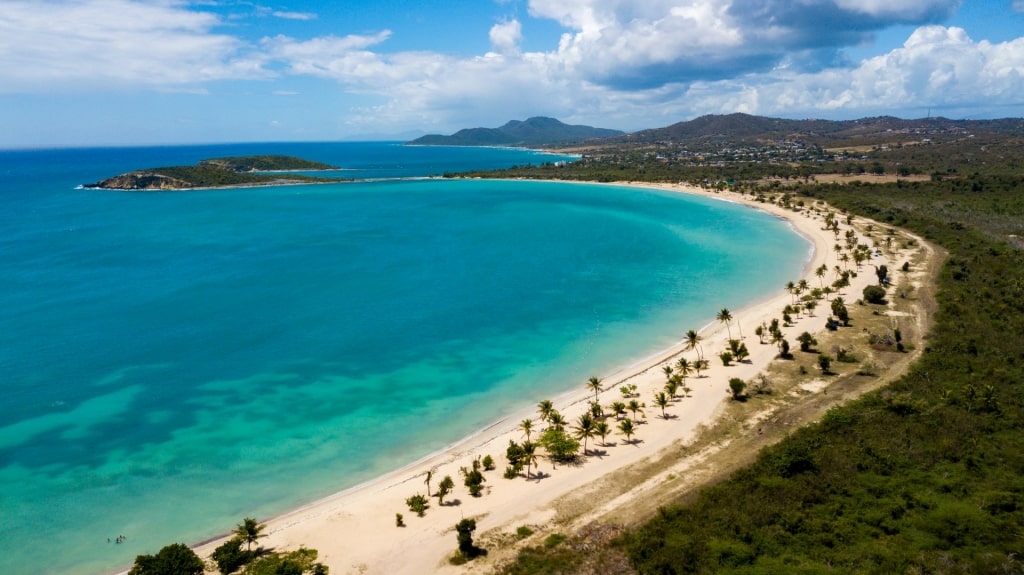
Vieques
Vieques is a large east coast island, known for its bioluminescent bay. Guinness World Records lists Mosquito Bay on Vieques as the world’s brightest, with “up to 700,000 tiny dinoflagellates per gallon of water”.
Vieques also has a wildlife refuge, covering most of the island, that protects both the land and the marine environment. Creatures found in the reserve include Antillean manatees, pelicans, and four species of sea turtle.
Many visitors are equally struck by the presence of “wild” horses roaming free on the beaches. There is a strong island culture around these lovely animals, many of which are the high-trotting Paso Fino breed.
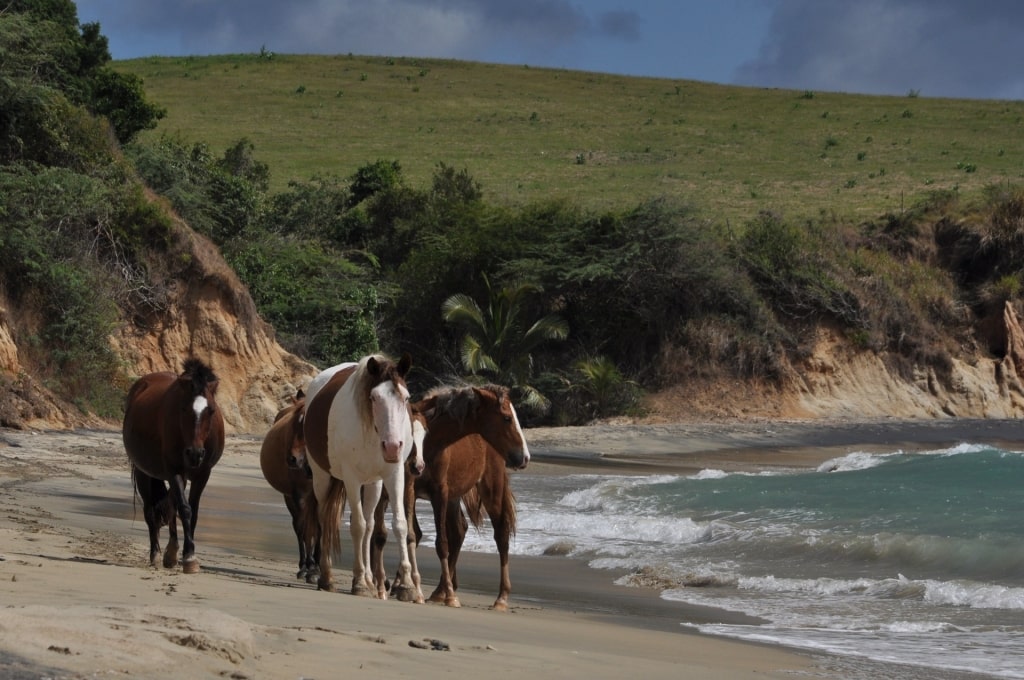
Horses in Vieques
No surprise then that horseback riding on the beach is a popular activity, along with hiking, diving, and, of course, snorkeling. The rich marine environment includes mangroves, coral reefs, and seagrass beds.
Snorkel hot spots include the mile-long Mosquito Pier, whose pillars attract a colorful array of fish. Be warned that there is a forty-foot drop-off here, so it’s not for nervous swimmers.
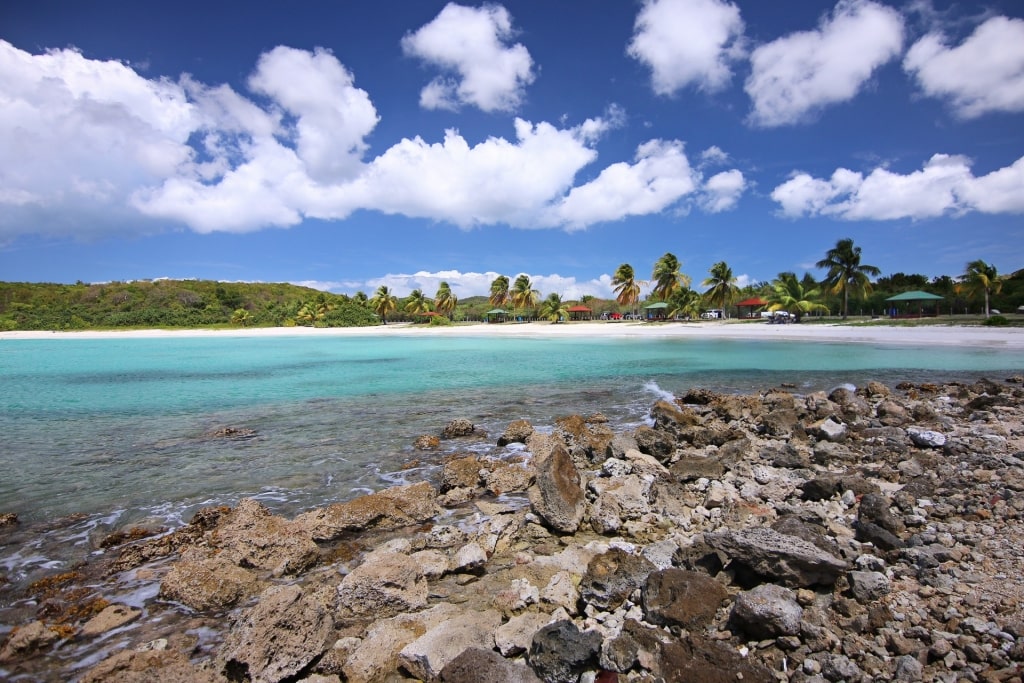
Playa Caracas
More beginner-friendly places include the beautiful beaches at La Chiva (Blue Beach) and Pata Prieta, which are both inside the reserve. For somewhere less remote, choose Playa Caracas which has enough facilities to make it popular with families.
Playa Flamenco, Culebra
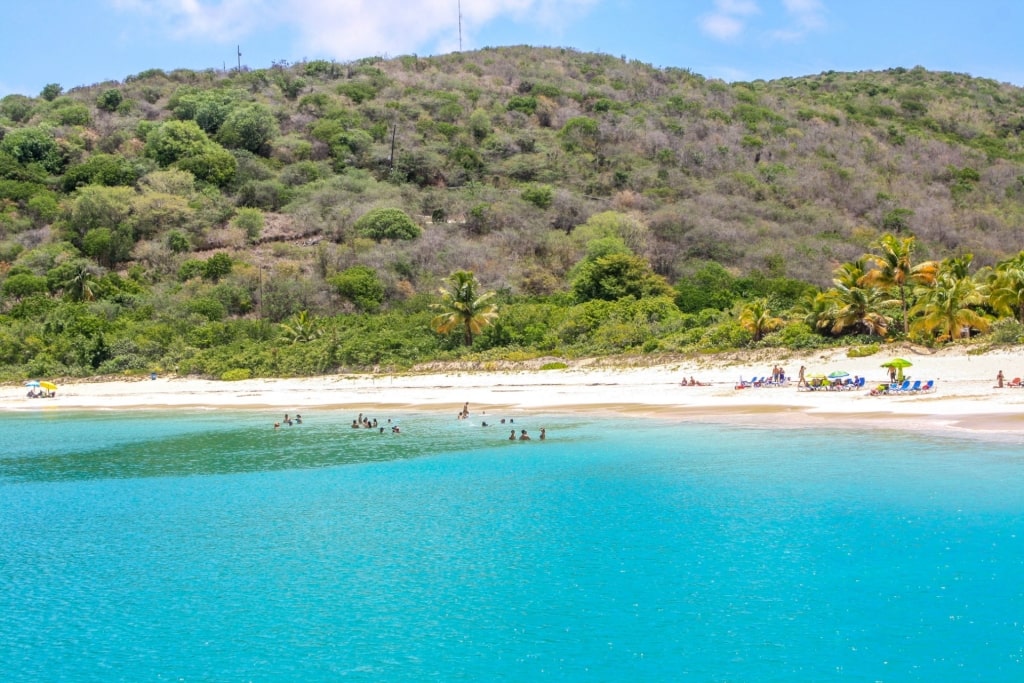
Playa Flamenco, Culebra
Culebra, along with Vieques, make up the so-called “Spanish Virgin Islands”. Culebra has two of Puerto Rico’s best snorkeling beaches, and either is worth the 30-minute flight to the island.
Picture-perfect Flamenco Beach is everything you’d want in a tropical beach. It’s a place to wiggle your toes in soft white sand, enjoy the shade of swaying palm trees, and swim in warm turquoise seas.
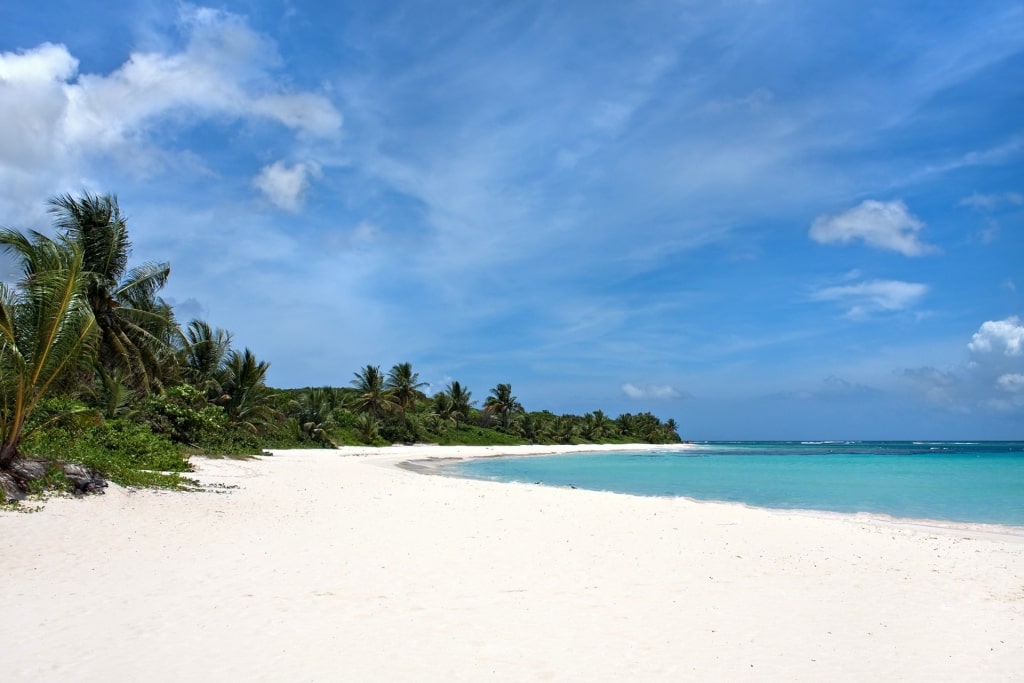
Playa Flamenco, Culebra
The beach has been voted the best beach in Puerto Rico, and regularly among the world’s very best as well. The many good bars will help ensure you leave with a very good impression as well.
No surprise Playa Flamenco is also one of the best places for snorkeling in Puerto Rico, with several tour companies offering excursions. Sea life includes sea turtles, stingrays, and many other tropical species.
You can snorkel straight off the shore, with the reef a short swim out. Back on the beach, take time to see the two rusted Sherman tanks on the beach, left by the U.S. Army.
Tamarindo Beach, Culebra
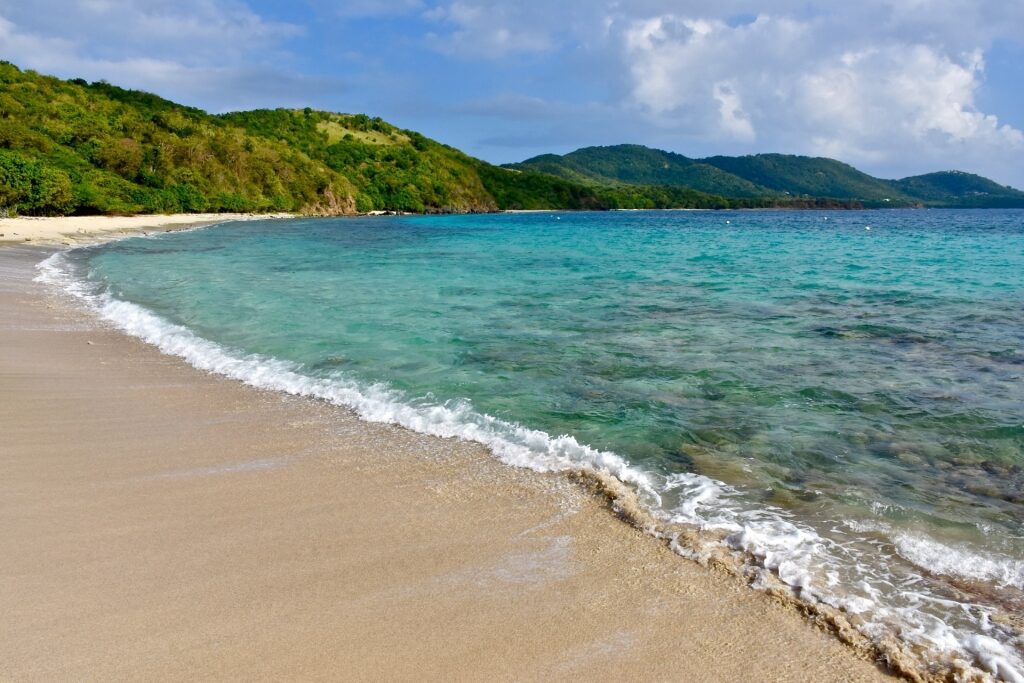
Tamarindo Beach, Culebra
Tamarindo is about ten minutes from Flamenco Beach but a very different experience. Much quieter, it’s on the sheltered western side, protected by Cayo Luis Peña offshore.
The mile-long beach here is also a mix of broken black/white rock, and coral rather than sand. That makes it harder on the feet (bring swim shoes), but much better for visibility underwater.
Entry is also gentler than at Flamenco, which can have sudden drops to catch you out. Overall, it’s a better snorkeling experience, despite lacking Flamenco’s lively atmosphere.
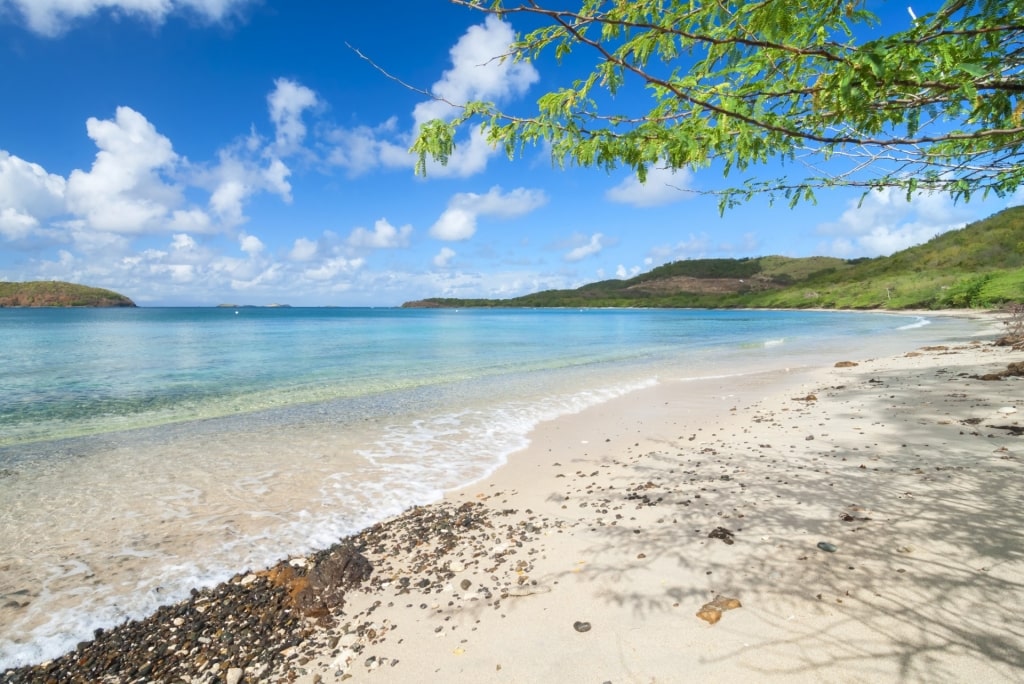
Tamarindo Beach, Culebra
The setting up of the Luis Peña Channel Natural Reserve in 1999 saw swift recovery of fish stocks. Coral recovery, especially after 2017 Hurricane Maria, is a longer process, but conservation is ongoing.
Underwater, you will see turtles, stingrays, squid, and discover coral life. The green sea turtles are best spotted amid the seagrass.
You might even see a (harmless) reef shark among the coral but it’s a rarity. For that kind of thrill, join a scuba tour to see nurse sharks much further out.
Read: Best Time to Visit Puerto Rico
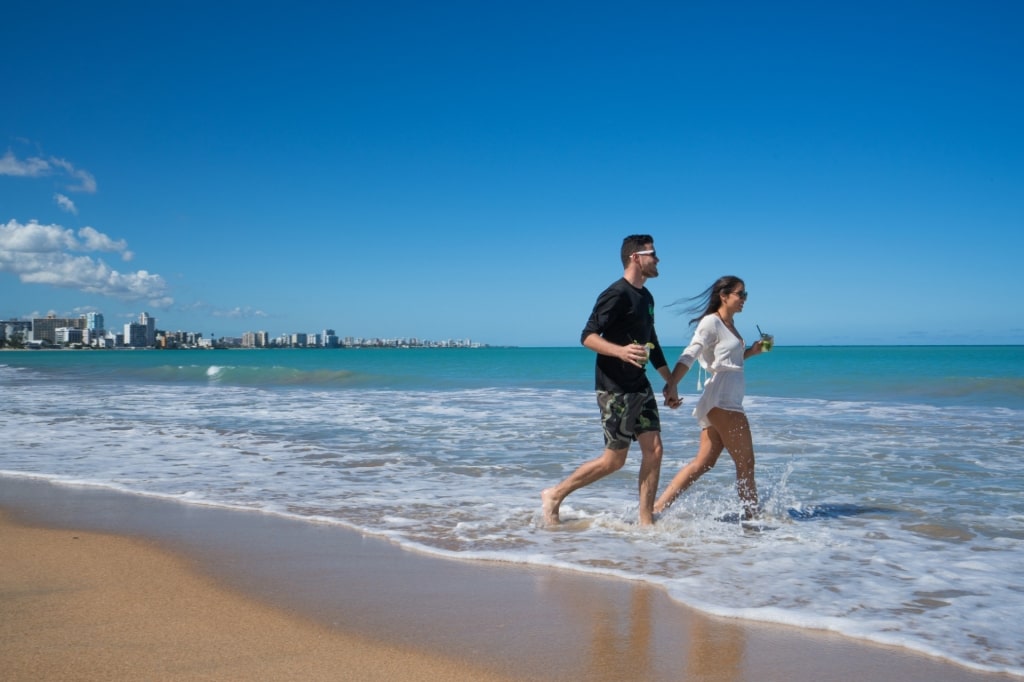
Isla Verde
Has this list of the best places to snorkel in Puerto Rico tempted you to visit the “Island of Enchantment”? Browse our cruises to San Juan to plan your next Caribbean getaway.






